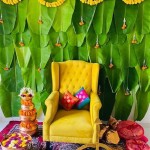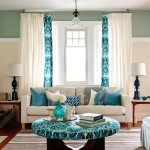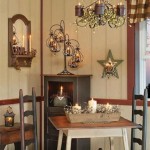Classroom Wall Decoration Ideas for Elementary Schools
The atmosphere of an elementary classroom plays a significant role in fostering a positive and engaging learning environment. Walls, often the most expansive surfaces in a classroom, present a valuable opportunity to enhance the aesthetic appeal, reinforce learning concepts, and inspire creativity. Thoughtful and purposeful classroom wall decorations can transform a sterile space into an inviting and stimulating area where students feel comfortable, motivated, and eager to learn.
Effective classroom wall decorations should be age-appropriate, visually appealing, and aligned with the curriculum. They should avoid being overly cluttered or distracting, as this can hinder students' ability to focus. Instead, the goal is to create a balanced and stimulating environment that supports learning and well-being. Selecting themes and specific decorative elements requires careful consideration of the students' age, developmental stage, subject matter, and the overall learning objectives for the school year.
This article explores a variety of classroom wall decoration ideas for elementary schools, focusing on practical and effective strategies for creating a stimulating and engaging learning environment. The ideas presented encompass various themes, subject areas, and decoration styles, with the aim of providing educators with a comprehensive resource for transforming their classrooms into vibrant and inspiring spaces.
Incorporating Curriculum-Based Displays
One of the most effective ways to utilize classroom wall space is to incorporate curriculum-based displays. These displays serve as visual aids that reinforce learning concepts and provide students with readily accessible information. By integrating subject matter into the wall decorations, educators can create an immersive learning environment that promotes active engagement and knowledge retention.
For example, in a language arts classroom, a word wall can be created to display commonly used words, vocabulary terms related to current reading materials, or examples of different parts of speech. This can be an interactive display where students can add new words as they learn them, or use the existing words to create sentences and stories. Visual aids such as posters illustrating different literary devices (e.g., similes, metaphors, personification) can also be displayed to provide ongoing reinforcement of these concepts.
In a mathematics classroom, number lines, multiplication charts, and geometric shape posters can be used to support students' understanding of mathematical concepts. Displays showcasing problem-solving strategies or real-world applications of math can also be effective. For instance, a display demonstrating how measurements are used in cooking or construction can help students connect abstract mathematical concepts to practical applications.
Science classrooms can benefit from displays featuring the periodic table, diagrams of the human body, or illustrations of different ecosystems. Interactive displays, such as charts where students can track weather patterns or record observations from science experiments, can further enhance engagement. Visual aids related to specific science topics, such as the life cycle of a butterfly or the solar system, can also be displayed to reinforce learning.
Social studies classrooms can incorporate maps of the world, timelines of historical events, and posters featuring significant figures in history. Creating displays that highlight different cultures and perspectives can promote cultural awareness and understanding. Encouraging students to contribute to these displays by sharing information about their own heritage or current events can further foster a sense of community and engagement.
The key to effective curriculum-based displays is to ensure that they are visually appealing, age-appropriate, and easy to understand. The information should be presented in a clear and concise manner, using engaging visuals and interactive elements to capture students' attention. Regularly updating the displays to reflect the current curriculum topics will keep them relevant and ensure that they continue to support student learning.
Creating an Inspirational and Motivational Environment
Beyond curriculum-based displays, classroom walls can be utilized to create an inspirational and motivational environment that encourages students to strive for their best. Visual cues and positive affirmations can significantly impact students' self-esteem, motivation, and overall well-being. By incorporating elements that promote a growth mindset and celebrate achievement, educators can foster a positive and supportive learning atmosphere.
One strategy is to display posters featuring inspirational quotes from influential figures. These quotes can be chosen to align with specific themes or values, such as perseverance, kindness, or teamwork. The quotes should be displayed in a visually appealing manner, using attractive fonts and graphics that capture students' attention. Periodically changing the quotes can keep the display fresh and engaging.
Another effective approach is to create a "celebration corner" where students' achievements are showcased. This can include displaying student artwork, writing samples, or awards they have received. Recognizing and celebrating students' accomplishments, both big and small, can boost their confidence and motivate them to continue striving for excellence. The celebration corner should be updated regularly to reflect the latest student achievements.
Growth mindset posters can be used to promote the idea that intelligence and abilities are not fixed traits but can be developed through effort and dedication. These posters can feature examples of growth mindset language, such as "I can't do it yet" instead of "I can't do it," or "I learned from my mistake" instead of "I failed." By consistently reinforcing a growth mindset, educators can help students develop resilience, embrace challenges, and persist through setbacks.
Displays that highlight positive character traits, such as kindness, respect, and responsibility, can also contribute to a positive classroom environment. These displays can feature examples of how these traits are demonstrated in everyday actions, or stories that illustrate the importance of these values. Encouraging students to reflect on their own behavior and identify ways they can embody these positive traits can further promote character development.
Creating a visually appealing and welcoming classroom environment can also contribute to students' overall well-being. Incorporating elements such as calming colors, natural light, and comfortable seating can create a more relaxing and conducive learning atmosphere. Plants can also be added to the classroom to bring a touch of nature indoors and improve air quality.
The goal is to create a space where students feel valued, supported, and inspired to learn. By incorporating inspirational and motivational elements into the classroom wall decorations, educators can foster a positive and empowering learning environment that helps students reach their full potential.
Utilizing Student-Created Artwork and Displays
Incorporating student-created artwork and displays into the classroom environment not only enhances the aesthetic appeal but also fosters a sense of ownership and pride among students. When students see their work displayed prominently in the classroom, it validates their efforts and encourages them to take greater pride in their learning. This can lead to increased motivation, engagement, and a stronger sense of community within the classroom.
One of the most straightforward ways to utilize student-created artwork is to create a designated art display area. This can be a bulletin board, a wall space, or even a clothesline where students' artwork can be hung. The artwork should be displayed in an organized and visually appealing manner, ensuring that each piece is clearly visible and properly lit. Regularly rotating the artwork will keep the display fresh and engaging, allowing all students to have their work showcased throughout the year.
In addition to displaying individual artwork, collaborative art projects can also be incorporated into the classroom wall decorations. These projects can involve the entire class working together to create a mural, a mosaic, or a large-scale installation. Collaborative projects promote teamwork, communication, and problem-solving skills, while also creating a sense of shared accomplishment. The completed projects can be displayed prominently in the classroom, serving as a reminder of the students' collective efforts.
Student writing samples can also be displayed in a variety of creative ways. Essays, poems, stories, and research reports can be showcased on bulletin boards or transformed into visually appealing presentations. For example, students can create illustrated book reports that summarize their reading and provide visual representations of key characters and settings. These book reports can then be displayed on the classroom walls, encouraging other students to explore new books and authors.
Interactive displays can also be created using student work. For instance, a "question of the week" display can be set up, where students can write their answers to a thought-provoking question on sticky notes and attach them to the display. This encourages critical thinking, discussion, and engagement with the subject matter. The display can be updated weekly with a new question, keeping it fresh and relevant.
When displaying student work, it is important to provide clear and constructive feedback. Students should be given opportunities to reflect on their work and identify areas for improvement. Feedback can be provided through written comments, verbal discussions, or peer reviews. By providing meaningful feedback, educators can help students develop their skills and build confidence in their abilities.
The key is to create a classroom environment where students feel valued, respected, and empowered to express their creativity. By incorporating student-created artwork and displays into the classroom wall decorations, educators can foster a sense of ownership, pride, and community within the classroom.

Classroom Decor Gallery Pacon Creative S

40 Attractive Kindergarten Classroom Decoration Ideas To Make It Look Catchy Talkdecor School Wall Decor Daycare

50 Classroom Decorations Ideas And Themes

Classroom Decoration Ideas For High School To Elementary Preschool Decor Kindergarten Rainbow Theme

Classroom Decor Ideas For Your School Walls The Simple Stencil

Groovy Classroom Decorating Kit 47 Pc

20 Best Classroom Decoration Ideas For Teachers

Classroom Decor Theme Ideas For Upper Elementary Sweet Tooth Teaching

Word Wall Art Classroom Decor Room Doors

20 Best Classroom Decoration Ideas For Teachers
Related Posts







